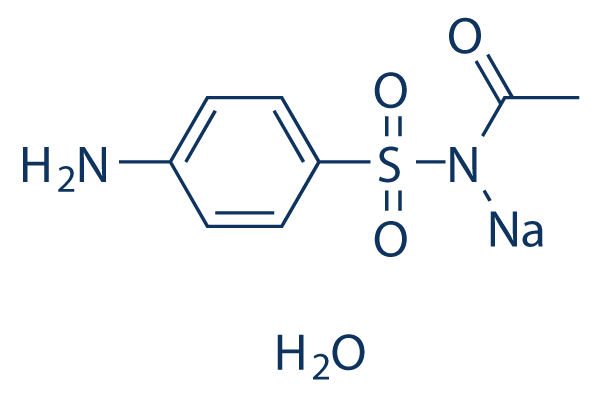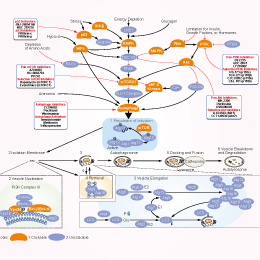
- Bioactive Compounds
- By Signaling Pathways
- PI3K/Akt/mTOR
- Epigenetics
- Methylation
- Immunology & Inflammation
- Protein Tyrosine Kinase
- Angiogenesis
- Apoptosis
- Autophagy
- ER stress & UPR
- JAK/STAT
- MAPK
- Cytoskeletal Signaling
- Cell Cycle
- TGF-beta/Smad
- Compound Libraries
- Popular Compound Libraries
- Customize Library
- Clinical and FDA-approved Related
- Bioactive Compound Libraries
- Inhibitor Related
- Natural Product Related
- Metabolism Related
- Cell Death Related
- By Signaling Pathway
- By Disease
- Anti-infection and Antiviral Related
- Neuronal and Immunology Related
- Fragment and Covalent Related
- FDA-approved Drug Library
- FDA-approved & Passed Phase I Drug Library
- Preclinical/Clinical Compound Library
- Bioactive Compound Library-I
- Bioactive Compound Library-Ⅱ
- Kinase Inhibitor Library
- Express-Pick Library
- Natural Product Library
- Human Endogenous Metabolite Compound Library
- Alkaloid Compound LibraryNew
- Angiogenesis Related compound Library
- Anti-Aging Compound Library
- Anti-alzheimer Disease Compound Library
- Antibiotics compound Library
- Anti-cancer Compound Library
- Anti-cancer Compound Library-Ⅱ
- Anti-cancer Metabolism Compound Library
- Anti-Cardiovascular Disease Compound Library
- Anti-diabetic Compound Library
- Anti-infection Compound Library
- Antioxidant Compound Library
- Anti-parasitic Compound Library
- Antiviral Compound Library
- Apoptosis Compound Library
- Autophagy Compound Library
- Calcium Channel Blocker LibraryNew
- Cambridge Cancer Compound Library
- Carbohydrate Metabolism Compound LibraryNew
- Cell Cycle compound library
- CNS-Penetrant Compound Library
- Covalent Inhibitor Library
- Cytokine Inhibitor LibraryNew
- Cytoskeletal Signaling Pathway Compound Library
- DNA Damage/DNA Repair compound Library
- Drug-like Compound Library
- Endoplasmic Reticulum Stress Compound Library
- Epigenetics Compound Library
- Exosome Secretion Related Compound LibraryNew
- FDA-approved Anticancer Drug LibraryNew
- Ferroptosis Compound Library
- Flavonoid Compound Library
- Fragment Library
- Glutamine Metabolism Compound Library
- Glycolysis Compound Library
- GPCR Compound Library
- Gut Microbial Metabolite Library
- HIF-1 Signaling Pathway Compound Library
- Highly Selective Inhibitor Library
- Histone modification compound library
- HTS Library for Drug Discovery
- Human Hormone Related Compound LibraryNew
- Human Transcription Factor Compound LibraryNew
- Immunology/Inflammation Compound Library
- Inhibitor Library
- Ion Channel Ligand Library
- JAK/STAT compound library
- Lipid Metabolism Compound LibraryNew
- Macrocyclic Compound Library
- MAPK Inhibitor Library
- Medicine Food Homology Compound Library
- Metabolism Compound Library
- Methylation Compound Library
- Mouse Metabolite Compound LibraryNew
- Natural Organic Compound Library
- Neuronal Signaling Compound Library
- NF-κB Signaling Compound Library
- Nucleoside Analogue Library
- Obesity Compound Library
- Oxidative Stress Compound LibraryNew
- Plant Extract Library
- Phenotypic Screening Library
- PI3K/Akt Inhibitor Library
- Protease Inhibitor Library
- Protein-protein Interaction Inhibitor Library
- Pyroptosis Compound Library
- Small Molecule Immuno-Oncology Compound Library
- Mitochondria-Targeted Compound LibraryNew
- Stem Cell Differentiation Compound LibraryNew
- Stem Cell Signaling Compound Library
- Natural Phenol Compound LibraryNew
- Natural Terpenoid Compound LibraryNew
- TGF-beta/Smad compound library
- Traditional Chinese Medicine Library
- Tyrosine Kinase Inhibitor Library
- Ubiquitination Compound Library
-
Cherry Picking
You can personalize your library with chemicals from within Selleck's inventory. Build the right library for your research endeavors by choosing from compounds in all of our available libraries.
Please contact us at [email protected] to customize your library.
You could select:
- Antibodies
- Bioreagents
- qPCR
- 2x SYBR Green qPCR Master Mix
- 2x SYBR Green qPCR Master Mix(Low ROX)
- 2x SYBR Green qPCR Master Mix(High ROX)
- Protein Assay
- Protein A/G Magnetic Beads for IP
- Anti-Flag magnetic beads
- Anti-Flag Affinity Gel
- Anti-Myc magnetic beads
- Anti-HA magnetic beads
- Poly FLAG Peptide lyophilized powder
- Protease Inhibitor Cocktail
- Protease Inhibitor Cocktail (EDTA-Free, 100X in DMSO)
- Phosphatase Inhibitor Cocktail (2 Tubes, 100X)
- Cell Biology
- Cell Counting Kit-8 (CCK-8)
- Animal Experiment
- Mouse Direct PCR Kit (For Genotyping)
- New Products
- Contact Us
Sulfacetamide sodium salt hydrate
Sulfacetamide is a sulfonamide antibiotic that blocks the synthesis of dihydrofolic acid by inhibiting the enzyme dihydropteroate synthase(DHPS) with IC50 of 9.5 μM. Sulfacetamide is a competitive inhibitor of bacterial para-aminobenzoic acid (PABA), which is required for bacterial synthesis of folic acid.

Sulfacetamide sodium salt hydrate Chemical Structure
CAS: 6209-17-2
Purity & Quality Control
Batch:
S475001
DMSO]
50 mg/mL]
false]
Water]
50 mg/mL]
false]
Ethanol]
2 mg/mL]
false
Purity:
99.77%
99.77
Sulfacetamide sodium salt hydrate Related Products
| Related Compound Libraries | Kinase Inhibitor Library FDA-approved Drug Library Natural Product Library Bioactive Compound Library-I Bioactive Compound Library-Ⅱ | Click to Expand |
|---|
Signaling Pathway
Choose Selective Autophagy Inhibitors
Biological Activity
| Description | Sulfacetamide is a sulfonamide antibiotic that blocks the synthesis of dihydrofolic acid by inhibiting the enzyme dihydropteroate synthase(DHPS) with IC50 of 9.5 μM. Sulfacetamide is a competitive inhibitor of bacterial para-aminobenzoic acid (PABA), which is required for bacterial synthesis of folic acid. | ||
|---|---|---|---|
| Targets |
|
| In vitro | ||||
| In vitro | Sulfacetamide inhibits Arabidopsis DHPS with IC50 of 9.5 μM, pKa=5.4[1]. Sulfacetamide induces anti-proliferative effects on T-47D cells and it is independent of apoptosis and cell cycle arrest. Sulfacetamide treatment lowers expression of p53/DRAM pathway in parallel with upregulation of Akt/mTOR pathway promoting cytoprotective autophagy. The LD50 of sulfacetamide in T-47D cells after 48 h is 41 mM. Sulfacetamide does not cause DNA fragmentation. In cells treated with sulfacetamide, the ATG5 expression level increases suggesting an increase in autophagosome formation in the autophagy pathway. Autophagy induction in the sulfathiazole and sulfacetamide treatments is not accompanied by apoptosis and occurred without any distinctive arrest in a phase of the cell cycle. It triggers autophagy in T-47D cells via a DAPK independent pathway[2]. Sodium sulfacetamide or sulfacetamide is a bacteriostatic agent that is active against sulfonamide-sensitive Gramnegative and Gram-positive bacteria, including Streptococci, Staphylococci, E. coli, Klebsiella pneumoniae, Pseudomonas pyocyanea, Salmonella spp., Proteus vulgaris, and Nocardia, which are usually isolated in secondary infections of the skin. Sulfacetamide inhibits mannose-6-phosphate isomerase (also known as phosphomannose isomerase (PMI)), which is considered the key enzyme in kinetoplastid energy metabolism[3]. | |||
|---|---|---|---|---|
| Cell Research | Cell lines | human breast cancer T-47D cells | ||
| Concentrations | 0.0-50 mM | |||
| Incubation Time | 24, 48 and 72 h | |||
| Method | Cells are cultured in RPMI medium 1640, supplemented with 10% FBS and 1% penicillin/streptomycin, in a humidified atmosphere of 5% carbon dioxide in air at 37°C. According to MTT assay, the LC50 of sulfathiazole and sulfacetamide after 48 h is determined as 6.5 mM and 41 mM, respectively. Doxorubicin and sodium salt of sulfadrugs are dissolved in culture medium to the final desired concentration based on the determined LC50 and filtered. Cells (at 80% confluency) are incubated with freshly prepared drugs for 48h in a humidified incubator before being trypsinized and washed with phosphate-buffer saline 3 times and stored at −70°C. For cell viability assay, cells are seeded in at least triplicate wells for each concentration of drug per time at 1 × 104 cells/well in a 96-well plate. After 24h of seeding, the cells has grown to ~80% confluency. The medium is changed to that containing drugs at concentrations ranging from 0.0-50 mM. The concentration range for doxorubicin is 0-6 µM. After 24, 48 and 72 h, each well is filled with 25 μl MTT stock solution (4 mg/ml or 100 μg/well) and incubated for 3 h at 37°C. Formazan crystals are dissolved in 100 µl of dimethyl sulfoxide (DMSO) and quantified using a microplate reader at 570 nm. The MTT assays are performed at least 3 times for each drug and the percentage of surviving cells relative to control (untreated sample) is calculated. | |||
| In Vivo | ||
| In vivo | The LD50 of sulfacetamide for mice is 16,500 mg/kg by the oral route. In humans, the side effects include erythema, moderate swelling, nausea, vomiting, and headache. In addition to these side effects, the occurrence of StevensJohnson syndrome is reported in HIV-positive patients who received sulfacetamide drops for eye infections. All of these side effects, however, are associated with oral administration or high drug absorption through the skin, mucous membranes, and the conjunctiva, whereas topical use is not associated with strong side effects. | |
|---|---|---|
Chemical Information & Solubility
| Molecular Weight | 254.24 | Formula | C8H9N2O3S.H2O.Na |
| CAS No. | 6209-17-2 | SDF | Download Sulfacetamide sodium salt hydrate SDF |
| Smiles | CC(=O)[N-]S(=O)(=O)C1=CC=C(C=C1)N.O.[Na+] | ||
| Storage (From the date of receipt) | |||
|
In vitro |
DMSO : 50 mg/mL ( (196.66 mM); Moisture-absorbing DMSO reduces solubility. Please use fresh DMSO.) Water : 50 mg/mL Ethanol : 2 mg/mL |
Molecular Weight Calculator |
|
In vivo Add solvents to the product individually and in order. |
In vivo Formulation Calculator |
||||
Preparing Stock Solutions
Molarity Calculator
In vivo Formulation Calculator (Clear solution)
Step 1: Enter information below (Recommended: An additional animal making an allowance for loss during the experiment)
mg/kg
g
μL
Step 2: Enter the in vivo formulation (This is only the calculator, not formulation. Please contact us first if there is no in vivo formulation at the solubility Section.)
% DMSO
%
% Tween 80
% ddH2O
%DMSO
%
Calculation results:
Working concentration: mg/ml;
Method for preparing DMSO master liquid: mg drug pre-dissolved in μL DMSO ( Master liquid concentration mg/mL, Please contact us first if the concentration exceeds the DMSO solubility of the batch of drug. )
Method for preparing in vivo formulation: Take μL DMSO master liquid, next addμL PEG300, mix and clarify, next addμL Tween 80, mix and clarify, next add μL ddH2O, mix and clarify.
Method for preparing in vivo formulation: Take μL DMSO master liquid, next add μL Corn oil, mix and clarify.
Note: 1. Please make sure the liquid is clear before adding the next solvent.
2. Be sure to add the solvent(s) in order. You must ensure that the solution obtained, in the previous addition, is a clear solution before proceeding to add the next solvent. Physical methods such
as vortex, ultrasound or hot water bath can be used to aid dissolving.
Tech Support
Answers to questions you may have can be found in the inhibitor handling instructions. Topics include how to prepare stock solutions, how to store inhibitors, and issues that need special attention for cell-based assays and animal experiments.
Tel: +1-832-582-8158 Ext:3
If you have any other enquiries, please leave a message.
* Indicates a Required Field
Tags: buy Sulfacetamide sodium salt hydrate | Sulfacetamide sodium salt hydrate supplier | purchase Sulfacetamide sodium salt hydrate | Sulfacetamide sodium salt hydrate cost | Sulfacetamide sodium salt hydrate manufacturer | order Sulfacetamide sodium salt hydrate | Sulfacetamide sodium salt hydrate distributor








































